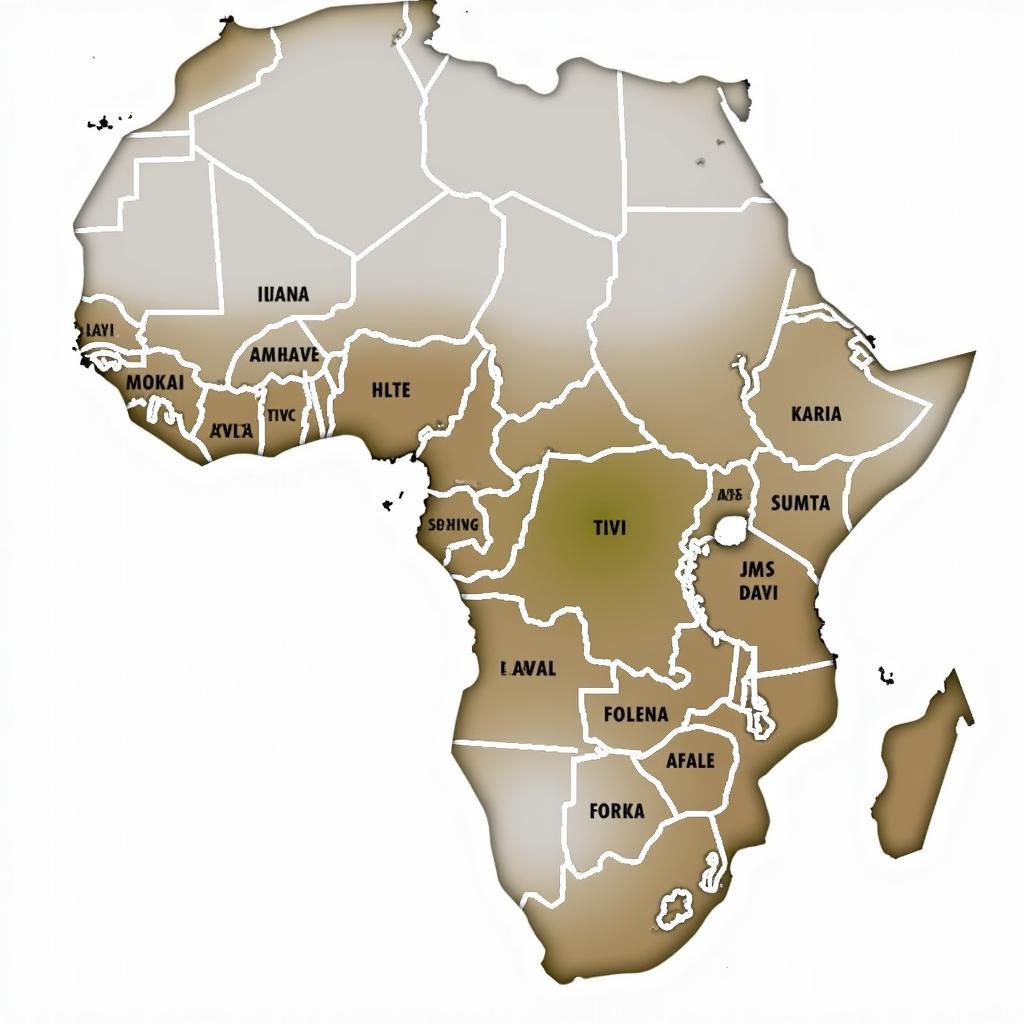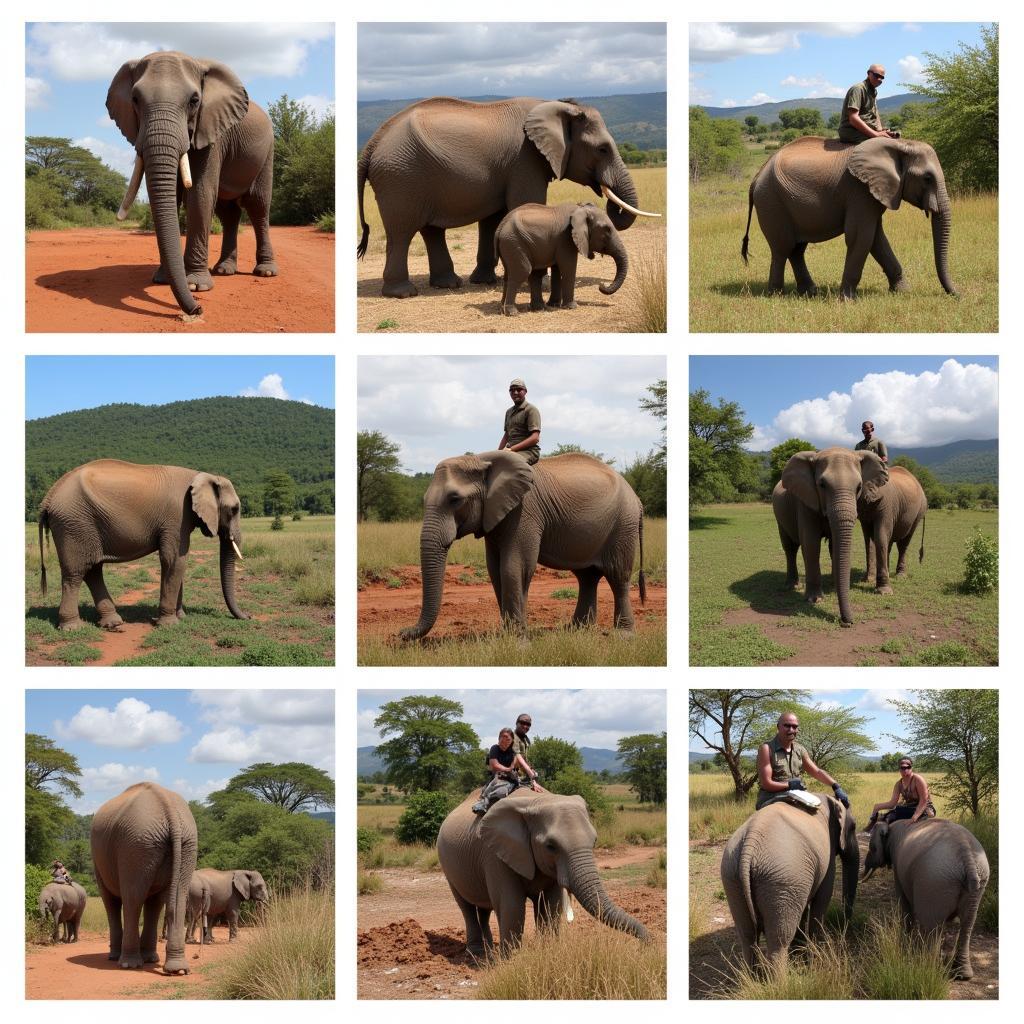African Elephant Distribution Map: Unveiling the Giants’ Range
The African Elephant Distribution Map showcases the current range of these majestic creatures across the African continent. Understanding where these animals live and roam is crucial for their conservation and helps us grasp the challenges they face in a world grappling with habitat loss and human-wildlife conflict.
Deciphering the African Elephant Distribution Map
 African Elephant Distribution Across Africa
African Elephant Distribution Across Africa
African elephants, the largest land mammals on Earth, are not confined to a single, continuous territory. Instead, their distribution is fragmented, resembling a mosaic of populations scattered across different countries in sub-Saharan Africa. The map reveals a concentration of elephants in Southern and Eastern Africa, with notable populations in countries like Botswana, Zimbabwe, Tanzania, and Kenya.
Factors Shaping the Distribution
Several factors contribute to the present-day distribution of African elephants, painting a complex picture of their ecological needs and the challenges they face:
- Habitat Availability: Elephants thrive in diverse habitats, ranging from savannas and grasslands to forests and even deserts. However, their distribution is intricately linked to the presence of water sources, especially during the dry season.
- Human-Elephant Conflict: As human populations expand and land-use patterns change, elephants increasingly find themselves in conflict with people. Competition for resources, such as land and water, often leads to crop raiding and other forms of human-wildlife conflict.
- Poaching: While illegal, the ivory trade continues to threaten elephant populations. Poaching hotspots, often driven by international demand for ivory, can significantly impact local elephant numbers and distribution patterns.
Conservation Efforts and Future Outlook
 Conservation Efforts for African Elephants
Conservation Efforts for African Elephants
Numerous organizations and governments across Africa are dedicated to protecting these iconic animals. Conservation efforts focus on:
- Anti-poaching initiatives: These include ranger patrols, surveillance technology, and community engagement to combat poaching activities.
- Habitat protection and restoration: Establishing and managing protected areas, along with restoring degraded habitats, are vital for securing elephant populations.
- Translocation programs: Moving elephants from areas of high human-wildlife conflict to more suitable habitats is another strategy employed to mitigate conflict and support population management.
“Protecting African elephants requires a multi-faceted approach,” states Dr. Fatuma Mbwana, a renowned wildlife biologist. “From addressing the root causes of poaching to promoting co-existence between elephants and local communities, we must work tirelessly to ensure a future where these giants continue to roam free.”
Conclusion: A Map to Guide Conservation
The African elephant distribution map serves as a stark reminder of the fragmented nature of elephant populations and the ongoing threats they face. Understanding their distribution is not just about plotting points on a map; it’s about recognizing the interconnectedness of habitat, human activities, and the survival of these magnificent creatures. By supporting conservation efforts and promoting responsible tourism, we can contribute to a future where the African elephant distribution map tells a story of resilience, coexistence, and the enduring presence of these giants across the African landscape.
FAQs
What is the current population estimate for African elephants?
Estimates suggest there are around 400,000 African elephants remaining in the wild.
Which country has the largest population of African elephants?
Botswana is currently home to the largest population of African elephants.
What are the main threats to African elephants?
Habitat loss, human-elephant conflict, and poaching for ivory remain the most significant threats.
How can I contribute to African elephant conservation?
Supporting reputable conservation organizations, choosing sustainable tourism options, and raising awareness about their plight are all ways to make a difference.
Where can I find a detailed African elephant distribution map?
Several online resources, including those from conservation organizations like the IUCN and WWF, provide up-to-date maps.
Need help planning your African safari? Contact us at +255768904061, kaka.mag@gmail.com, or visit our office in Mbarali DC Mawindi, Kangaga, Tanzania. Our team is available 24/7 to assist you!
